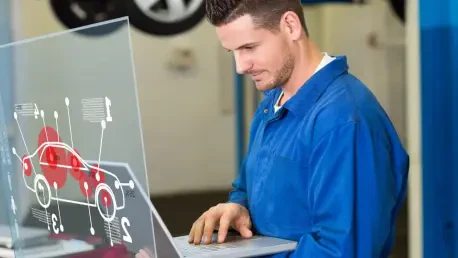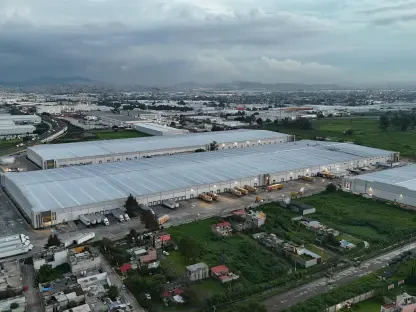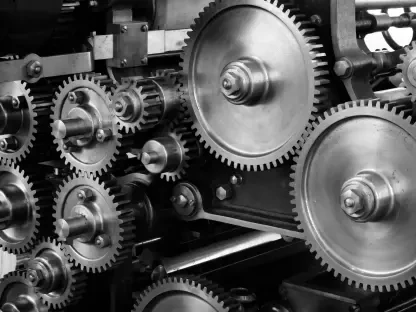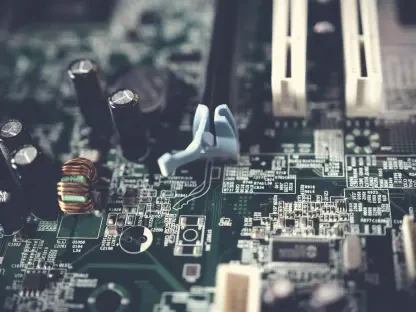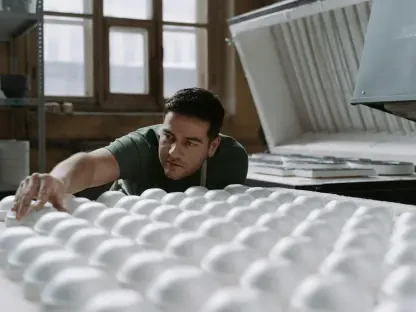In recent years, the automotive industry has witnessed a remarkable shift in its approach to manufacturing, driven by the infusion of cutting-edge technologies like 3D printing. This transformative technology is not just a fleeting trend but a significant change agent reshaping how manufacturers approach vehicle remanufacturing. By adopting additive manufacturing, companies are redefining traditional processes, enhancing efficiency, and maintaining a competitive edge in an ever-evolving marketplace. One prominent player embracing this innovation is the Walkinshaw Group, an exemplary case of leveraging 3D technologies to navigate market demands and manufacturing changes.
The rise of additive manufacturing, particularly 3D printing, is dramatically altering the landscape of the automotive remanufacturing sector. This technology facilitates a seamless conversion of vehicle systems, ultimately offering new possibilities for customizations and improvements in meeting regulatory standards. The Walkinshaw Group’s journey in this domain is illustrative, showcasing how the integration of 3D printing into their processes catalyzed a significant shift, enabling them to remanufacture and convert vehicle systems more efficiently. This method ensures components are not only retrofit but also optimized for performance and compliance with stringent regional requirements.
Walkinshaw Group’s Strategic Transformation
The Shift from Traditional Manufacturing
For the Walkinshaw Group, the strategic pivot from conventional manufacturing to a focus on remanufacturing marked an essential evolution in their operational paradigm. Initially esteemed for enhancing Holden vehicles via their alliance with Holden Special Vehicles, Walkinshaw’s prowess in performance upgrades underscored their reputation. Yet, with the cessation of GM’s operations in the region in recent years, the company had to pivot swiftly to maintain its market relevance and operational viability. The transformation led to the development of remanufacturing programs for notable Original Equipment Manufacturers like RAM and Chevrolet, aimed at addressing the Australian market’s unique demands.
This integration of additive manufacturing technology has been pivotal in enabling the conversion of American vehicles from left-hand to right-hand drive. Such meticulous conversions require customized components that meet rigorous ergonomic and regulatory standards, a feat far more efficient with 3D printing capabilities. The Walkinshaw Group’s adaptation involved disassembly and re-engineering parts of these vehicles, where 3D printing proved indispensable. It facilitated the design and production of bespoke parts, ensuring precision and reliability in the conversion process, thereby setting industry benchmarks.
The Role of Additive Manufacturing in Operations
By integrating Objective 3D’s technological advancements into its production lines, Walkinshaw effectively streamlined its remanufacturing process, overcoming conventional limitations. This collaboration has been instrumental in pioneering innovative vehicle remanufacturing solutions. Employing Stratasys Fortus 450mc FDM 3D Printers, Walkinshaw has achieved rapid prototyping and tooling, enabling swift design iterations and testing. These advanced printers have revolutionized Walkinshaw’s approach to converting vehicles efficiently, positioning the company at the forefront of modern automotive remanufacturing.
The strategic use of high-performance printing systems reflects a comprehensive shift to an innovation-driven business model. The printers’ material versatility—handling everything from flame-retardant and chemical-resistant to carbon-fiber reinforced materials—offers unmatched flexibility. Leveraging sophisticated thermoplastics, like ULTEM material, Walkinshaw produces components resilient to extreme engine temperatures, thereby optimizing performance and longevity of its remanufactured products. The emphasis on durable and versatile materials further ensures the vehicles meet and exceed industry standards, effectively translating technological investments into tangible market advantages.
Enhancing Productivity and Innovation
Innovations Shaping Traditional Industries
The increasing trend of embedding advanced 3D printing technologies in traditional industries is a testament to its transformative potential. By incorporating these innovations, businesses can elevate productivity while simultaneously propelling innovation within their sectors. Walkinshaw Group serves as a benchmark for this integration, demonstrating how legacy automotive craftsmanship can be enhanced by new-age technological paradigms. The seamless fusion between Walkinshaw’s deep-rooted automotive excellence and cutting-edge manufacturing technology provides a blueprint for other industries aiming to thrive amidst globalization and rapidly changing production norms.
Parallel to this evolution in manufacturing, the Walkinshaw Group’s strategic maneuvers highlight pivotal opportunities for growth and market leadership. The company’s commitment to incorporating innovative solutions underscores the importance of embracing change rather than resisting it. This proactive stance equips them to respond adeptly to customer needs, regulatory requirements, and emerging trends, transforming challenges into strategic competitive advantages. In a global industry increasingly defined by technological integration, Walkinshaw embodies the successful amalgamation of tradition with modernity.
Sustaining Competitive Advantage in a Dynamic Market
Maintaining a competitive edge requires a dynamic approach to navigating technological advancements and market shifts. Through the seamless integration of 3D printing solutions, Walkinshaw Group has solidified its position as a leader in the automotive remanufacturing landscape. The investment in cutting-edge technologies not only augments their production capabilities but also signals a dedication to pioneering industry innovation. This adaptability reflects an understanding that surviving in today’s market is deeply intertwined with the willingness to embrace transformative technologies like additive manufacturing.
Strategic partnerships, such as that with Objective 3D, emphasize the critical role of collaboration in sustaining technological and operational advantages. These alliances facilitate the exchange of expertise and resources, enabling companies like Walkinshaw to stay ahead of the curve. In an industry marked by rapid change, leveraging 3D printing for vehicle conversions is not merely a tool but a strategic imperative for those committed to remaining relevant. The ability to harness such innovations underlines Walkinshaw’s trajectory of sustained growth within a competitive marketplace, setting a precedent for other industry players aiming to leverage new technologies as catalysts for progress.
Future Prospects and Industry Trends
Broadening the Realm of Possibilities
Looking forward, the implications of 3D printing in vehicle remanufacturing suggest an expansive horizon of possibilities. The technology’s potential extends beyond the mere fabrication of components, poised to redefine industry standards and manufacturing methodologies. With advancements in material science and printing techniques, the scope for creating more durable, lightweight, and sustainable components expands, promising efficiency gains and reduced environmental impact. As the Walkinshaw Group exemplifies, adopting 3D technology will likely drive broader industry innovations, gravitating towards a model of sustainable and adaptive manufacturing that meets both consumer and environmental needs.
The industry’s path forward will increasingly reflect a shift towards a diversified application of additive manufacturing, fostering deeper integration within supply chains and operational frameworks. Companies will explore new frontiers in customization and production efficiency, leveraging 3D printing to meet bespoke consumer demands and address specific market challenges. As a result, enterprises that traditionally relied on conventional manufacturing are expected to pivot towards practices that optimize cost structures and production timelines. This transition signals a significant industry trend, emphasizing the strategic relevance of technology in paving the way for forward-thinking manufacturing processes.
Navigating the Future Landscape
The future landscape of vehicle remanufacturing will be characterized by efficiency, innovation, and sustainability. With 3D printing as a crucial component of this transformation, the industry is set to experience radical changes, reimagining the possibilities of manufacturing complexity and scale. The transition involves not only technological adoption but also a paradigm shift in organizational strategies, aligning business models with advanced production capabilities. As seen in Walkinshaw’s roadmap and its strategic alliances, the bar is continually being set for other industry players aspiring to achieve similar milestones in innovation and growth.
Fostering a culture of innovation and leveraging advanced technologies like 3D printing stand as powerful enablers for shaping the contours of the remanufacturing industry. The dynamic interplay between tradition and innovation is expected to yield new methodologies that can support increased demand for sustainable vehicle production and conversion processes. As companies integrate these transformative technologies into their operations, they pave the way for a more competitive and resilient industry, better positioned to face the challenges and opportunities of an ever-evolving global market.
The Way Forward
In recent times, the automotive industry has experienced a significant transformation, largely due to the integration of advanced technologies such as 3D printing. This breakthrough is far from a passing fad; it is a powerful force driving change in how vehicles are remanufactured. By embracing additive manufacturing, companies are not only redefining age-old processes but are also boosting efficiency and preserving their competitive stance in a rapidly shifting market. A leading example of this forward-thinking approach is the Walkinshaw Group, adeptly utilizing 3D technologies to address market demands and manufacturing shifts. Additive manufacturing, especially 3D printing, significantly revolutionizes the automotive remanufacturing landscape. This technology streamlines the conversion of vehicle systems, opening new avenues for customization and facilitating compliance with regulatory standards. Walkinshaw Group’s venture illustrates the profound impact of 3D printing on their operations, enabling more efficient remanufacturing and conversion of vehicle systems while enhancing performance and meeting strict regional regulations.
